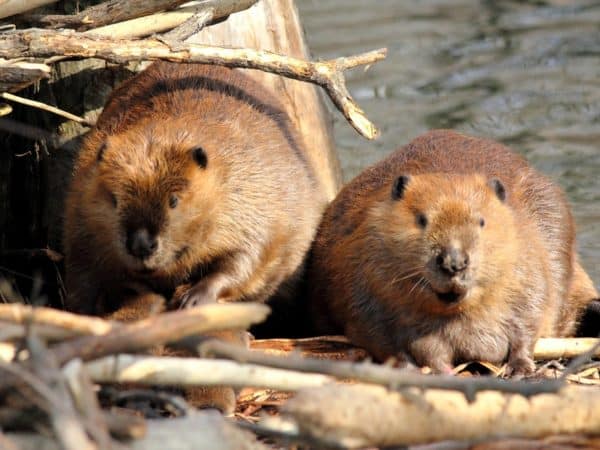
 Imported Canadian beavers are wreaking havoc in Argentina.
Imported Canadian beavers are wreaking havoc in Argentina.
A 1946 plan to attract tourists and spark fur trade in Argentine province Tierra del Fuego by importing 50 Canadian beavers seems to be backfiring 70 years later.
Fagnano Lake, which sits along the Chile and Argentina border, has had a rapid increase in beaver population and is now home to over 200,000 of the tree destroying buggers. Beavers have even been spotted upwards of 300 kilometres away from their original habitat and have gone as far as to cross the Magellan Strait to take over whole islands.
After the fur trade’s failure, the beavers were left to themselves for many years with no one to hunt them and no predators in the area to help keep their population in check. Authorities have even tried offering rewards for people to go out and trap beavers, but so few people know how to trap that nothing ever became of it. Beavers, as most Canadians know, are also really smart and will set off traps by setting objects such as branches on them. Even when caught the semiaquatic rodents are known to chew off their limbs to get themselves free.
Imported Canadian beavers causing mass damage to forests…
According to a 2011 report by Latin America’s NPR.org, non-native North American beavers have caused mass amounts of damage to forests, caused flooding which creates lagoons and destroys roads, and have caused millions of dollars’ worth of damage, so the amount of damage has certainly done nothing but rise since then. The Chilean government has also recently launched a population control project which will cost roughly $8 million just to try and keep the beavers under control until a final solution can be agreed upon.
There are plans between Argentina and Chile to eradicate over 100,000 of the buck toothed pests, but these plans are being heavily criticized by animal rights activists who want humane capture of the beavers so they can be returned to Canada. Complete eradication will also not be an easy thing to do due to the rough terrain of the surrounding areas.
But the problem may be too widespread now to even consider humane capture and control.
“We’ll have to move in on the beavers in a rolling front, going from watershed to watershed to remove them, with a massive monitoring programme behind it to make sure they have all been eradicated,” said ecologist Josh Donlan, who is the director of the environmental group Advanced Conservation Strategies.
Others means have also been attempted, including getting local restaurants to server beaver meat on their menu’s but the plan didn’t seem to work due to, well, the quality of beaver meat.
“It’s dark-colored, it’s a little bit tough, it takes a long time to cook. It’s not amazing, but it’s fine,” said Ezequiel Rodriguez, who’s the owner of a local restaurant that tried to serve beaver.
Although part of the original intended plan to use the beavers to attract tourists has partially worked, it has clearly come at a tremendous cost to the local wildlife and people.
Leave a Reply
You must be logged in to post a comment.




 Share
Share Tweet
Tweet Share
Share




Comment